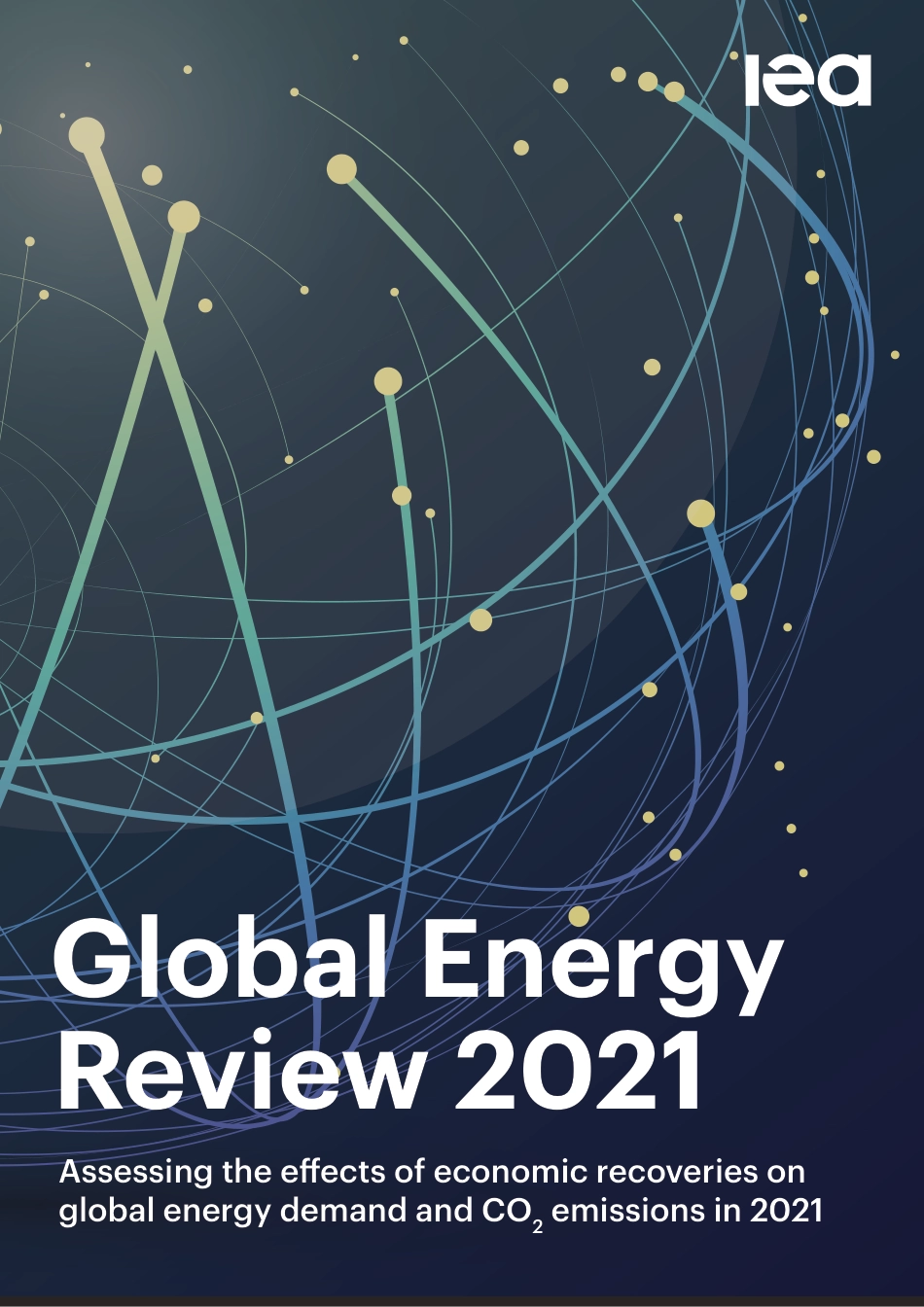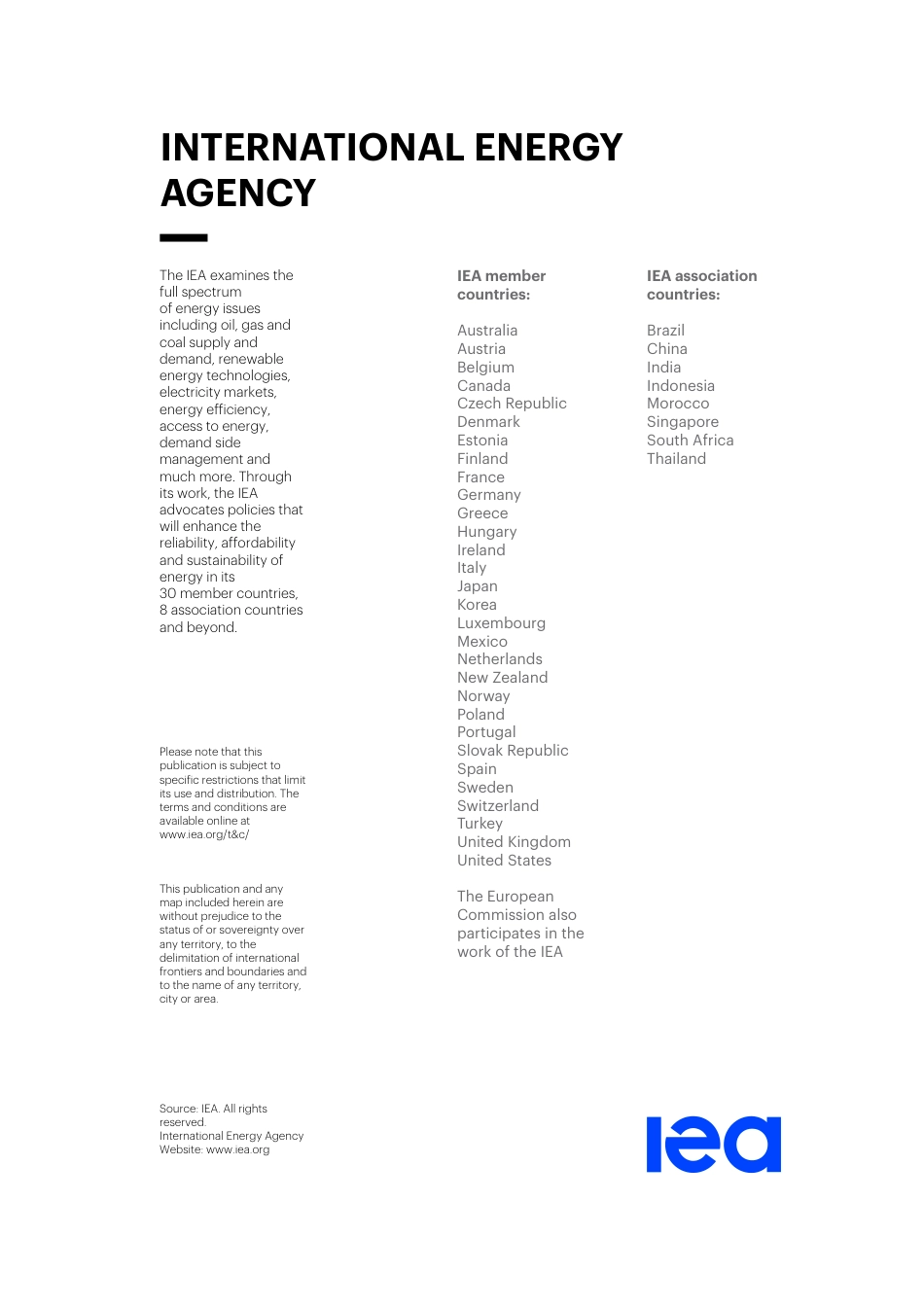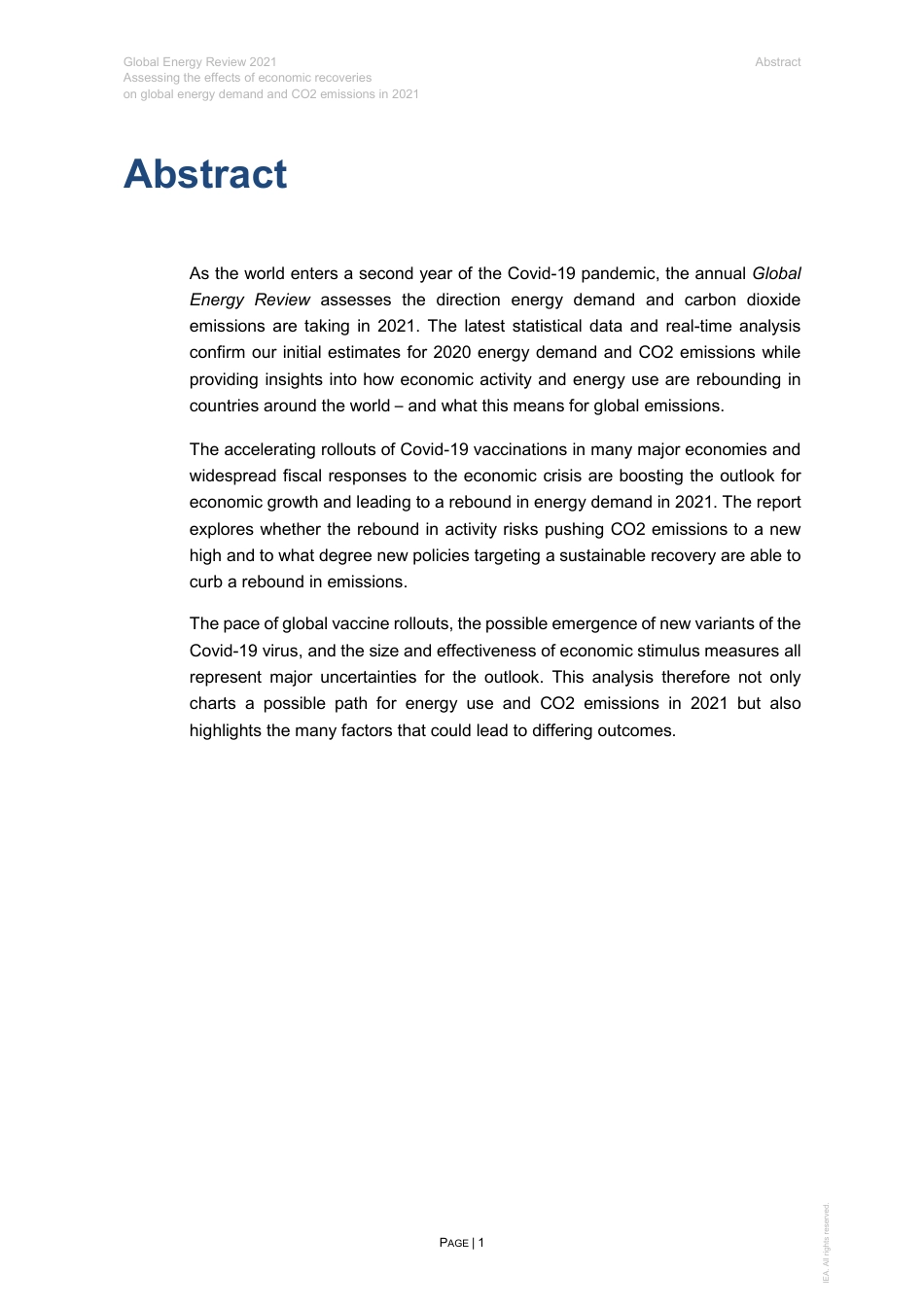Review 2021Assessing the effects of economic recoveries on global energy demand and CO2 emissions in 2021Global EnergyThe IEA examines the full spectrum of energy issues including oil, gas and coal supply and demand, renewable energy technologies, electricity markets, energy efficiency, access to energy, demand side management and much more. Through its work, the IEA advocates policies that will enhance the reliability, affordability and sustainability of energy in its 30 member countries, 8 association countries and beyond.Please note that this publication is subject to specific restrictions that limit its use and distribution. The terms and conditions are available online at www.iea.org/t&c/This publication and any map included herein are without prejudice to the status of or sovereignty over any territory, to the delimitation of international frontiers and boundaries and to the name of any territory, city or area.Source: IEA. All rights reserved.International Energy Agency Website: www.iea.orgIEA member countries: Australia Austria BelgiumCanadaCzech Republic DenmarkEstoniaFinland France Germany Greece HungaryIreland ItalyJapanKorea Luxembourg Mexico Netherlands New Zealand NorwayPoland Portugal Slovak Republic Spain Sweden Switzerland Turkey United Kingdom United StatesThe European Commission also participates in the work of the IEAIEA association countries:BrazilChinaIndiaIndonesiaMoroccoSingaporeSouth AfricaThailandINTERNATIONAL ENERGYAGENCYGlobal Energy Review 2021 Abstract Assessing the effects of economic recoveries on global energy demand and CO2 emissions in 2021 PAGE | 1 IEA. All rights reserved. Abstract As the world enters a second year of the Covid-19 pandemic, the annual Global Energy Review assesses the direction ener...



